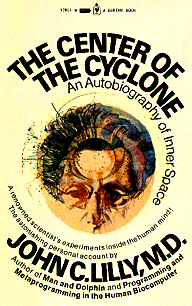|

CHAPTER 04
Following Instructions and Going with the Flow
|
with a microphone on another channel of the same tape recorder.
From these three hundred subjects we got on the order of 2,300 different
words. Three hundred of these words were in the dictionary; the rest
were words that we do not ordinarily use, i.e., nondictionary words
as we began to call tbem. In this work I received the very enthusiastic
contributions of Margaret Naesser, a student of linguistics from the
University of Wisconsim. Margaret had tremendous energy and initiative
and carried out the study using the IBM 360 computer system at the University
of Illinois to analyze our results. Dr. Heinz Von Foerster at the biocomputer
laboratory was intrigued by our results and arranged for us to use the
computer.
The computer analyses showed that, for each sound slot in the word "cogitate,"
the human biocomputer on repetition turns over and selects other sounds
which one tben hears as if coming from tbe stimulus word outside. Each
such sommd rs called a phon. We found that on the average people tended
to make twelve phon slots in the original stimulus word "cogitate."
The minimum number of slots was 3 and the maximum number was 26. The
number of substitutions of sounds in each of the twelve slots was different.
For the first slot, there were 13 substitutions In the second, 44 different
sounds could be brought in, and so on.
It turned out that this repeating word effect made it possible to demonstrate
very rapidly to live audiences their own biocomputer operations. This
is the reason that I went on with this work and made the transition
from the dolphin to the human through the repeating word effect. It
was an extremely convenient way of demonstrating to people their own
self metaprogramming and the various concepts of the hiocomputer.
In addition to hearing alternate words when being
<----BACK -- NEXT
---->
|